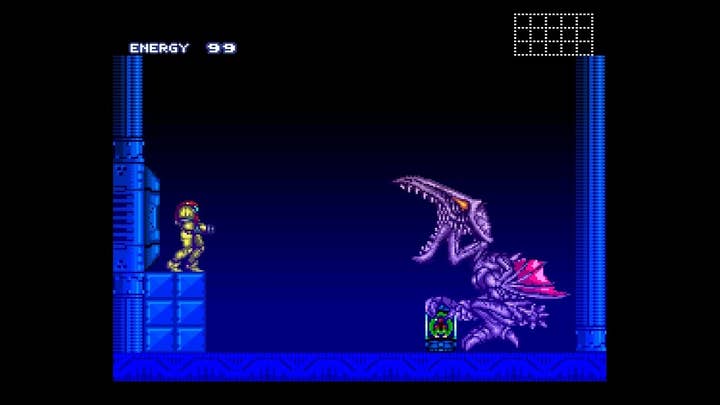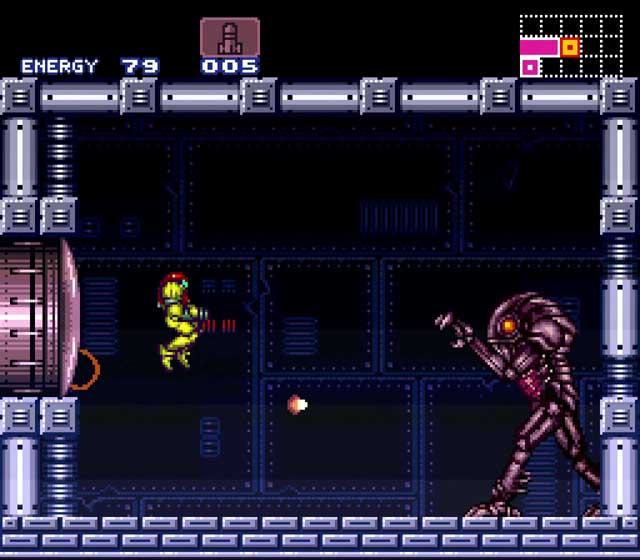
Why I Love is a guest commentary series from GamesIndustry.biz that aims to show how game developers value each other’s work. This post is by Eric Lavesson, lead developer at Decemberborn Interactive. Decemberborn’s retro-styled Metroidvania Cathedral is available now on Steam and GOG.com, and is coming soon to Nintendo Switch.
In the late ’80s, when I was eight years old and had just gotten an NES for Christmas, a friend brought me the original Metroid. It was unlike anything I’d ever seen before. I was used to games being linear, moving left to right, and even having only one screen. The original Metroid and Zelda blew me away. Being able to make decisions and go back and explore worlds like this was a whole new thing for me.

Unfortunately, I didn’t finish the original Metroid at the time. I spent a lot of time playing it, getting lost, hand-drawing maps and trying to remember where I had been and where I hadn’t been, but ultimately it was too difficult for me.
A few years passed and Nintendo started to introduce the SNES. I remember seeing a picture of it in Nintendo Power magazine (the Swedish version was called Nintendomagasinet). The Super Nintendo was pretty expensive at the time, so when it was released you had to share it with your siblings. A few years after the SNES was released (summer 1994 to be exact), Super Metroid was released. I remember seeing some gameplay footage and thinking it was awesome.
I haven’t finished the original yet, but I still enjoyed it a lot. So I had an idea of what to expect from Super Metroid. Of course, I didn’t know at the time that it would have such a major impact on my approach to level design when designing my own games.
Today, I look at Super Metroid from two different perspectives: once as a 12-year-old who played Super Metroid on the SNES around Christmas and marveled at how cool everything was, and once as a 38-year-old game designer…I was still amazed at how cool everything was. But today it’s easier to put into words.
The game was visually impressive back then. That may not be the case anymore, but the level design is just as good. Getting stuck or not knowing where to go isn’t as much of an issue because that’s part of the equation. The map becomes the central tool you use to progress. This is a big change from the first Metroid game, where you had to write down on paper where you are. Looking on the map for places you haven’t been yet becomes a puzzle in itself.

If you are studying game design, you will find a lot of articles about tutorials: ways to teach the player the game through thoughtful design, not through text or long explanations. This can be very effective if done right, but it doesn’t have to be just learning a new game mechanic or teaching the player something at the beginning of the game.
What sets the world of Super Metroid apart is its thoughtful level design. It’s not just a bunch of interconnected rooms. What I’ve always found interesting is that even when you feel totally lost, the world is designed to push you to where you should be. The world is designed to “push” you to where you should be, sooner or later. As you explore the world, you may stumble upon the next area you should go to. Even when you’re lost, you make amazingly large progress and feel like a genius for your discoveries, while the designers are secretly pulling the strings to create this handcrafted sense of accomplishment.
As you explore the world, you gain new abilities that give you access to new terrains. This is a very distinctive feature of Metroid or Metroid-like games. This is almost the gist of the game cycle: explore, find new things, discover more of the world, and repeat. This very satisfying feeling of exploration is why I play these kinds of games.
How much you want to involve yourself with the Metroid world is up to you, though there’s plenty of backstory and story in it. Apart from one (annoyingly unskippable) cutscene early in the game, there’s absolutely no explanation of what’s going on. To me, this is a good thing, because this lack of intrusive narration only adds to the lonely atmosphere of the experience. You know where you are and why you’re there. The introduction at the start of the game and the tutorial that followed told it all. You are Samus Aran, on planet Zebes, and must recover the missing Metroid that Ridley has stolen.
Armed with this knowledge, from here on it’s purely atmosphere. You’re alone on a dangerous alien planet, but you know exactly what your mission is. No explanations or additional backstory are needed to enjoy and play the game.

For me, its simplicity adds to the atmosphere as you imagine what it would be like to be in Samus’ shoes. You know as much as they do and you learn as you play. You have to find a way to survive and move forward. It was more engrossing than any game I’d ever played, especially as a kid. Combined with a fantastic soundtrack, everything in the entire game works as one to convey a sense of loneliness and forward momentum.
Although not completely comparable, many years later I had some of the same feelings when playing Dead Space (the fights with the Necromorphs in Ishimura were surprisingly reminiscent of the fights with the Space Pirates in Zebes). Especially the sense of desperation of being alone in a hostile environment and trying to figure out how to deal with it all.
What impressed me even more is how Super Metroid built this atmosphere using mere 2D sprites on 16-bit technology. This combination of atmosphere, level design and a great soundtrack created an unforgettable experience for me. This is why I replay this game every Christmas and appreciate its ingenuity year after year.

Leave a Reply